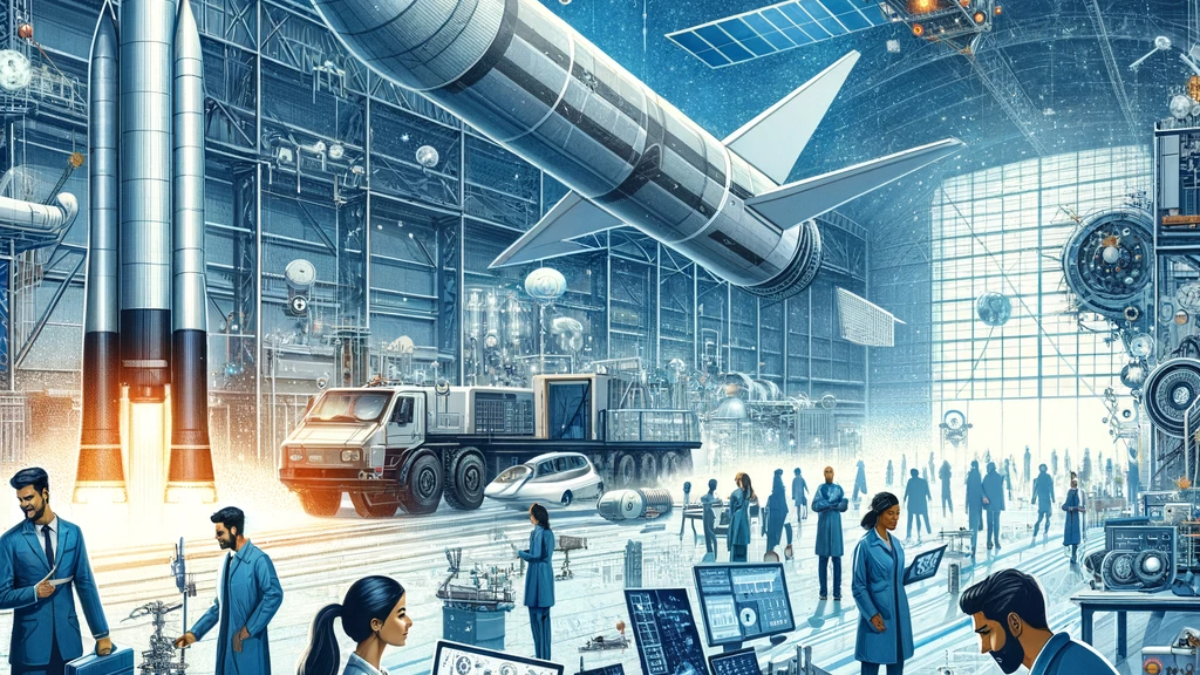Aeronautical engineering is a distinct field under aerospace engineering that specifically deals with the creation, advancement, and upkeep of aircraft operating within the Earth’s atmosphere. This domain has served as a fundamental pillar of human advancement in the atmosphere, resulting in notable breakthroughs in aviation, military technologies, and interstellar investigation. This blog article seeks to examine the various possibilities, benefits, drawbacks, uses, constraints, and future potential of aeronautical engineering.
Table of Contents
Possibilities in Aeronautical Engineering
- Innovative Aircraft Design: Developing more efficient, faster, and environmentally friendly aircraft.
- Drone Technology: Advancements in unmanned aerial vehicles for civilian, commercial, and military use.
- Space Exploration Vehicles: Designing vehicles for space exploration, contributing to missions beyond our planet.
- Advanced Materials: Exploring new materials for lighter, stronger, and more durable aircraft structures.
Advantages
- Improved Safety: Ongoing advancements in aircraft design result in enhanced safety during air travel.
- Economic Growth: The aviation sector plays a substantial role in the worldwide economy.
- Environmental Enhancements: Advancements in environmentally sustainable technologies mitigate the impact of aviation on carbon emissions.
- National Security: Enhanced military aircraft bolster the defense of the nation.
Disadvantages
- Expenses: The process of researching, developing, and manufacturing aircraft requires significant monetary resources.
- Environmental Impact: Although there have been advancements, aviation continues to contribute to environmental contamination.
- Technical Challenges: The intricate nature of aircraft systems necessitates a profound level of expertise and might give rise to difficulties in both maintenance and operation.
Applications
Commercial Aviation: Aeronautical engineering plays a crucial role in the advancement and functioning of commercial airlines.
Defense: Engaging in the development of fighter planes, spy aircraft, and various other military apparatus.
The space industry plays a significant role in the advancement of spacecraft and satellite technology.
Research and Development: Engaging in investigations pertaining to aerodynamics, propulsion systems, and material science.

Limitations
- Regulatory Constraints: Stringent restrictions might impede innovation and prolong production time.
- Material Constraints: The pursuit of materials that are both lighter and stronger is a continuous and arduous endeavor.
- Budgetary constraints: Financial limitations might hinder the advancement of research and development.
Future Scope
- Green aircraft: Emphasis on sustainable and environmentally friendly aircraft technologies.
- Autonomous Aircraft: Advancement of fully self-governing commercial and military aircraft.
- Advancing the field of aeronautical engineering to support the growing space tourism sector.
- AI Integration: Utilizing artificial intelligence to improve aircraft performance and ensure safety.

Aeronautical engineering remains a dynamic and growing discipline, crucial for progress in aviation, military defense, and space exploration. Although it presents difficulties, its future holds promising advancements, notably in the fields of sustainability and autonomous flight technologies.

[…] hub but also a notable center for education, particularly in the field of engineering. The field of aeronautical engineering, which encompasses the design, construction, and upkeep of airplanes, has experienced a notable […]
[…] aircraft. It requires a profound comprehension of aerodynamics, materials science, propulsion, and structural analysis. Aeronautical engineers diligently strive to develop machines that are not only secure and efficient, but also ecologically […]
[…] Speed and Efficiency: The most significant advantage of the Hyperloop is its extraordinary speed, which could reduce travel time between major cities to minutes. faster than aeroplanes […]